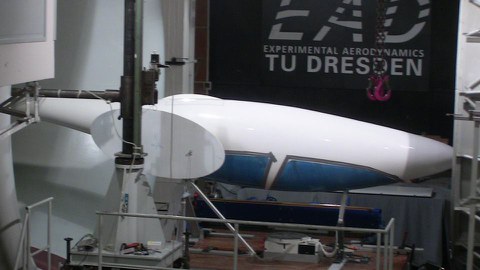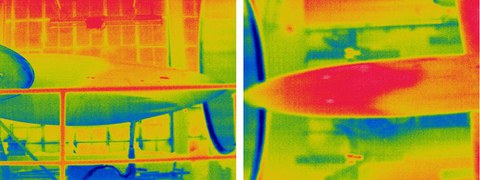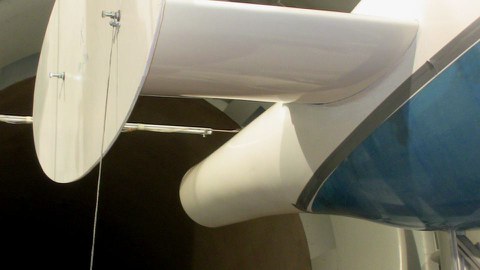06.02.2023
Rumpfgrenzschicht

Rumpfattrappe des Segelflugzeugs D-B 11 im Windkanal; das Modell ist in Rückenlage in der Messtrecke aufgeständert, um freien Zugang für Messungen an der glatten Unterseite zu erhalten.
Besonders bei Segelflugzeugen macht die Reibung der Strömung an der Oberfläche einen erheblichen Anteil am Widerstand aus. Deswegen werden für die Flügel Profile verwendet, auf denen die Strömung möglichst lange laminar bleibt, weil eine laminare Grenzschicht deutlich weniger Reibung erzeugt als eine turbulente. Überschlagsrechnungen legen nahe, dass auch einer laminaren Grenzschicht am Rumpf Einsparpotential steckt.
Im Rahmen ihrer Diplomarbeit und in Kooperation zwischen der Professur für Flugmechanik und Flugregelung und der Akademischen Fliegergruppe untersucht eine Studentin aus der VR China die Auswirkung der laminaren Lauflänge am Rumpf auf den Gesamtwiderstand. Dazu wird die Rumpfattrappe des in Entwicklung befindlichen Prototypen D-B 11 der Akaflieg im Windkanal vermessen.

Infrarotaufnahmen eines Segelflugzeugrumpfes im Windkanal; der Wechsel von roter zu gelber Färbung kennzeichnet den laminar-turbulenten Umschlag.

Pitotrechen zur Bestimmung des Gesamtdruckprofils in der Rumpfgrenzschicht
